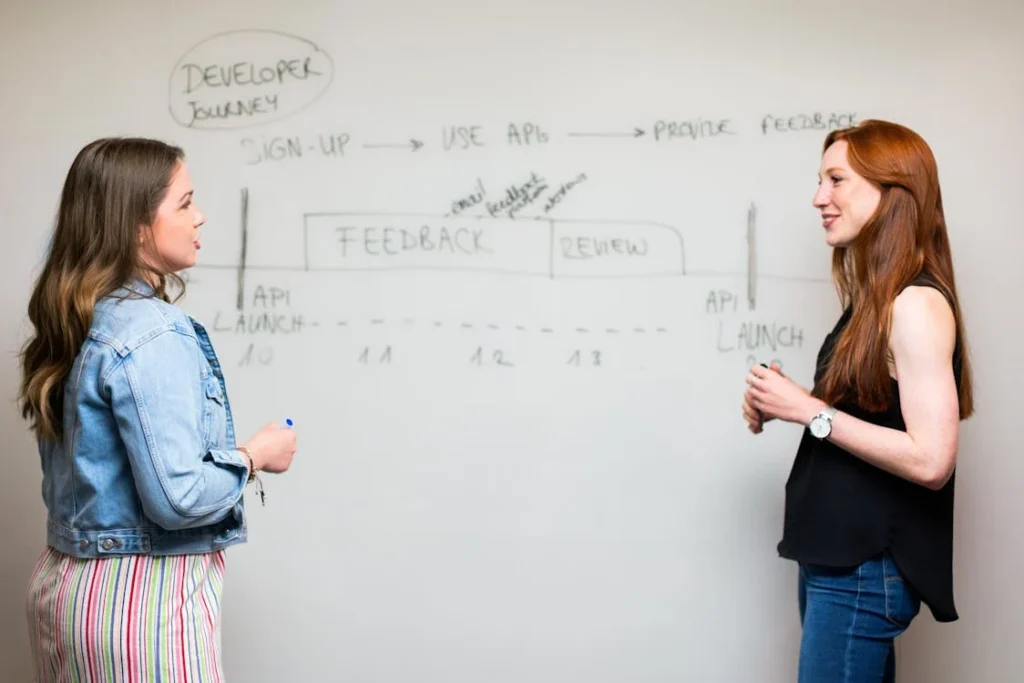Introduction

In the fast-evolving world of digital advertising, LinkedIn has emerged as a powerful platform for businesses looking to reach a highly targeted and professional audience. While many marketers are familiar with Facebook and Google Ads, LinkedIn advertising is often underutilized, despite its significant potential for driving business growth. Whether you’re aiming to enhance brand visibility, generate leads, or strengthen relationships with decision-makers, LinkedIn advertising offers unique features that can yield impressive returns on investment (ROI).
This article will delve into proven strategies for maximizing ROI with LinkedIn advertising. We will explore essential components such as understanding LinkedIn’s advertising platform, defining clear objectives, measuring performance, optimizing budgets, and adapting strategies for the future. By the end of this guide, you’ll be well-equipped to create and execute LinkedIn advertising campaigns that deliver lasting business success.

Understanding the Basics of LinkedIn Advertising for Optimal ROI
LinkedIn advertising allows businesses to tap into a unique network of over 900 million professionals globally, making it one of the most effective platforms for B2B marketing. However, to achieve optimal ROI, it’s important to grasp the fundamentals of how LinkedIn advertising works.
- LinkedIn Ad Types:
LinkedIn offers various ad formats, each designed for different business objectives. These include Sponsored Content, Sponsored InMail, Text Ads, and Dynamic Ads. Sponsored Content, for example, is ideal for brand awareness and lead generation, while Sponsored InMail is excellent for direct communication with decision-makers. - Targeting Capabilities:
One of the key strengths of LinkedIn advertising is its advanced targeting capabilities. You can filter your audience based on criteria like job title, industry, company size, seniority, location, and even LinkedIn group membership. This ensures your ads reach the most relevant individuals, increasing the likelihood of conversion and ultimately improving ROI. - LinkedIn Ad Campaign Manager:
The LinkedIn Campaign Manager is the central hub for managing and tracking your ads. It allows you to set up campaigns, monitor performance, and adjust your strategy based on real-time data. Understanding the platform’s interface and how to navigate it effectively is essential for maximizing ROI. - Audience Insights and Retargeting:
LinkedIn’s robust audience insights provide valuable data on who’s interacting with your ads. This information can be leveraged for retargeting, ensuring your ads reach users who have already shown interest in your brand or product. Retargeting is a highly effective strategy for improving ROI, as it targets individuals who are already familiar with your offering.
By understanding the basics of LinkedIn advertising, you set the stage for successful campaigns that deliver measurable results.

Defining Your Goals: Setting Clear Objectives for LinkedIn Advertising
Before you dive into LinkedIn advertising, it’s crucial to define clear and measurable goals. Whether your aim is to increase brand awareness, generate leads, or drive traffic to your website, setting the right objectives ensures your campaigns remain focused and results-oriented.
- Brand Awareness:
If your goal is to increase visibility, Sponsored Content and Display Ads are ideal choices. These formats are designed to reach a wide audience and establish your brand as a trusted industry leader. Metrics such as impressions and engagement rates will be key indicators of success in this category. - Lead Generation:
For B2B companies looking to generate qualified leads, LinkedIn’s Lead Gen Forms are an invaluable tool. These pre-filled forms simplify the process for users, making it easier for them to submit their information without leaving the platform. Setting up a lead generation campaign with clear calls to action (CTAs) can result in high-quality leads, directly contributing to ROI. - Website Traffic and Conversions:
If your goal is to drive traffic to your website or landing page, focusing on Click-Through-Rate (CTR) and conversion tracking will help you assess whether your ads are driving meaningful actions. You can also use LinkedIn’s Conversion Tracking tool to measure and optimize the performance of these types of campaigns. - Sales and Revenue Growth:
Ultimately, the goal of any advertising campaign is to drive sales and increase revenue. Setting up a campaign that directly ties to sales, such as Sponsored Content linked to product pages or special offers, allows you to track ROI more precisely. Keep in mind that sales cycles on LinkedIn may be longer due to the professional nature of the platform, so be patient and monitor progress over time. - Measurable KPIs:
Regardless of your specific goals, it’s crucial to define key performance indicators (KPIs) that align with your business objectives. Common KPIs include CTR, conversion rates, lead quality, and customer acquisition cost (CAC). Tracking these KPIs will give you a clear picture of whether your LinkedIn advertising efforts are delivering the desired ROI.
By setting clear, actionable objectives, you can align your LinkedIn advertising campaigns with your business goals and focus your efforts on what truly matters.

Measuring and Analyzing LinkedIn Advertising Performance to Boost ROI
Once your LinkedIn advertising campaigns are live, monitoring and analyzing their performance is critical to maximizing ROI. LinkedIn provides various tools and metrics to help you understand how your ads are performing and where improvements can be made.
- Using LinkedIn Campaign Manager for Tracking:
LinkedIn Campaign Manager provides a comprehensive overview of how your ads are performing. Key metrics like impressions, clicks, CTR, and engagement rates will give you insights into how well your ads resonate with your target audience. Regularly reviewing these metrics is essential for making data-driven decisions that improve ROI. - A/B Testing for Optimization:
To maximize ROI, it’s essential to test different ad creatives, headlines, and calls to action (CTAs). A/B testing allows you to compare variations of your ads and determine which elements perform best. By optimizing your ads based on these insights, you can improve performance and ultimately drive a higher return on your advertising spend. - Conversion Tracking:
Setting up conversion tracking on LinkedIn enables you to measure how your ads are contributing to business outcomes, such as form submissions, purchases, or newsletter sign-ups. Understanding which ads drive the most valuable actions is key to optimizing your LinkedIn advertising campaigns and maximizing ROI. - Attribution and Multi-Touch Analytics:
LinkedIn offers attribution modeling tools to help you understand the customer journey across multiple touchpoints. This data can help you identify which touchpoints and campaigns have the most significant impact on conversions. By analyzing these results, you can better allocate your budget and focus on high-performing campaigns. - Adjusting Based on Data Insights:
The key to boosting ROI is continuously optimizing your campaigns based on performance data. If certain ads are underperforming, make adjustments to targeting, creative, or bidding. Conversely, if some campaigns are performing well, consider increasing your budget allocation to maximize their potential.
By regularly measuring and analyzing your LinkedIn advertising performance, you can make informed decisions that enhance campaign effectiveness and improve ROI over time.

Budgeting and Bidding Strategies for Maximizing LinkedIn Advertising ROI
LinkedIn advertising offers a variety of budgeting and bidding options, each designed to help you optimize your spend. Whether you’re working with a small budget or have significant resources to allocate, understanding the most effective budgeting and bidding strategies can ensure that you get the best possible return on your investment.
- Setting a Realistic Budget:
When determining your LinkedIn advertising budget, it’s important to consider both your overall marketing goals and the cost per click (CPC) or cost per impression (CPM) for your target audience. B2B audiences on LinkedIn tend to be more expensive to reach, so plan your budget accordingly. Establish a daily or lifetime budget based on your campaign duration and goals. - Cost-Per-Click (CPC) vs. Cost-Per-Impression (CPM):
LinkedIn allows you to choose between CPC and CPM bidding. CPC is ideal if your goal is to drive website traffic or lead generation, while CPM works better for campaigns focused on brand awareness and impressions. Understanding the differences between these two models will help you select the best option for your objectives and budget. - Bid Adjustments and Optimization:
LinkedIn offers automated bidding options, but you can also manually adjust your bids to ensure your ads remain competitive. By setting competitive bids, you ensure your ads are placed in front of the right audience without overspending. Periodically review your bidding strategy to identify opportunities for optimization. - Using LinkedIn’s Audience Network:
LinkedIn’s Audience Network extends your ads beyond the platform to third-party websites and apps. This expands your reach, but it’s important to monitor the performance of ads in the Audience Network to ensure they are providing a positive ROI. Allocate a portion of your budget to this option if it aligns with your objectives. - Maximizing Budget Allocation for High-Performing Campaigns:
Once you identify which campaigns are generating the highest ROI, shift more of your budget to those efforts. Conversely, pause or adjust campaigns that aren’t performing well. Constantly fine-tuning your budget allocation ensures that your resources are being spent in the most efficient way possible.
Effective budgeting and bidding are critical components of any successful LinkedIn advertising campaign. By using the right strategies, you can stretch your budget further and achieve better ROI.

The Future of LinkedIn Advertising: Adapting Strategies for Continuous ROI Growth
As LinkedIn continues to evolve as an advertising platform, staying ahead of emerging trends and adapting your strategies will be essential for sustaining long-term ROI growth. Here are some trends and insights that will shape the future of LinkedIn advertising.
- Increased Automation and AI Integration:
LinkedIn is incorporating more AI-driven features into its advertising platform, including automated bidding, ad optimization, and audience targeting. As these tools become more advanced, they’ll make it easier for advertisers to scale campaigns and maximize ROI with less manual effort. - Video Content and Interactive Ads:
Video ads and interactive content are becoming more popular on LinkedIn, offering new ways to engage with your audience. As LinkedIn’s video advertising capabilities improve, marketers will need to adapt their strategies to incorporate high-quality video content that drives higher engagement and ROI. - Personalized and Dynamic Ads:
Personalized ads tailored to the individual user will continue to rise in importance. LinkedIn’s dynamic ad options allow advertisers to customize creative elements based on the user’s profile, such as job title or industry. These personalized ads are likely to result in higher engagement rates and improved ROI. - Enhanced Analytics and Reporting Tools:
LinkedIn is continuously enhancing its analytics and reporting features, providing deeper insights into ad performance. These tools will help advertisers track ROI more accurately and identify optimization opportunities in real-time. - Integration with Other Marketing Channels:
As LinkedIn integrates more closely with other marketing platforms (e.g., Google Ads, Facebook Ads), marketers will have the ability to create seamless cross-platform campaigns. This will allow for better budget allocation and more cohesive strategies, driving better results across multiple channels.
As LinkedIn’s advertising capabilities continue to evolve, staying informed and adapting to new features will be key to maintaining continuous ROI growth.
Conclusion

Maximizing ROI with LinkedIn advertising requires a deep understanding of the platform’s features, careful planning, ongoing optimization, and staying attuned to emerging trends. By defining clear objectives, measuring performance, managing budgets effectively, and adapting to new opportunities, businesses can achieve significant returns on their LinkedIn ad spend.
As you continue refining your LinkedIn advertising strategies, remember that consistency, data-driven decision-making, and continual learning are your keys to sustained success.
Call to Action: If you’re ready to take your LinkedIn advertising efforts to the next level, start exploring LinkedIn’s advanced tools and resources today. For further information and the latest updates on best practices, simply google LinkedIn advertising tips and trends to stay ahead of the curve!


